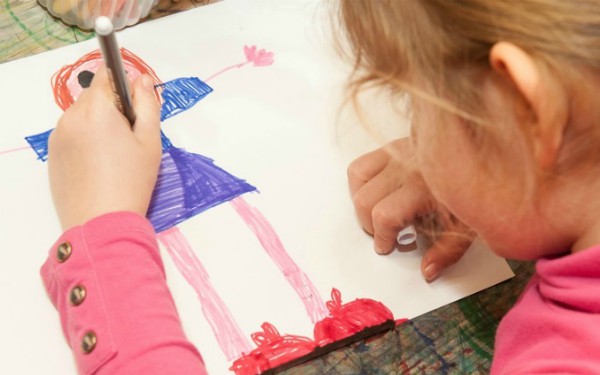
Yvonne Shemmings, training provider, social researcher and honorary lecturer, University of Kent
The need to engage in direct work with children is undisputed in any discussion of what good social work looks like. Legislation states our duty to ascertain the wishes and feelings of children, and the importance of allowing social workers to spend more time doing direct work and less on bureaucracy was stressed in Munro’s 2011 review of child protection and has been regularly restated since.
However, some social workers still report feeling they don’t get sufficient training in communicating with children and there is a danger that direct work becomes a tick-box exercise – focusing on compliance with policy in order to say that “wishes and feelings” work has taken place.
- Making sense of emotions with children and beginning and ending relationships
- Beyond wishes and feelings: the need for trauma-informed and research-informed practice (Keynote by David Shemmings)
- Ascertaining and evidencing the views wishes, feelings and experiences of disabled children
- Using contemporary technology in direct work with children
Find the full programme, details of workshops and book a place here.
At the Community Care skills workshop in October, myself and colleagues will run practical sessions on different aspects of direct work and techniques to try to help social workers feel more confident about doing meaningful work – find out more here.
As Laura Hanbury who is running the workshop on direct work with adolescents and the importance of understanding behaviour says, “I feel these events are so important in our line of work as it gives us all an opportunity to get together, learn and talk to each other and also share some good practice.”
In the mean time, here are some brief tips from the Community Care Inform Children direct work knowledge and practice hub on some of the topic areas covered.
1. Think about how you and the child experience feelings
We all have different temperaments and it is worth taking time to consider how you experience and express emotions so that you can identify how this might be similar or different to a child you are working with, and how you might adapt direct work accordingly. If you are recalling or trying to describe emotions do you tend to ‘feel them again’ or are you more comfortable with a more ‘cognitive’ approach where you talk about feelings in more detached way? Social workers and children who prefer the latter approach may be drawn to scales and questionnaires such as the strengths and difficulties questionnaire to help them share things.
This approach may, however, leave a child who prefers experiencing and talking about feelings directly unsure about the social worker’s willingness to talk about emotions with them. The social worker may inadvertently reject or discourage the child, or be puzzled by the emotion and discount it as a result. Being aware of the different tendencies people have and ensuring your focus is on observing how the child responds can help to mitigate this.
2. Consider cultural norms
Practise using planned activities beforehand, and attempt to predict any questions that may arise – this applies to any child and what you know about their experiences but is particularly important if they are from a different cultural background to you. What might ‘expressing their view’ mean to this child? Does their culture have proximity comfort zones, social norms about direct eye contact and hand gestures, or any rules about sitting on the floor?
Care should be taken if the child comes from a culture where it is unacceptable for them to name their parents (by their given name). Adults from some cultures may not get involved in their children’s play, believing play is something specific to childhood. If children are not routinely played with by adults they may find the social worker’s interest in doing activities with them puzzling.
3. Adapt tools and techniques for use with disabled children and those with specific needs
Case vignettes shared on the Community Care Inform hub show that common direct work methods can be used with disabled children with some, but not a great deal, of modification. For example, for a child who had some difficulties with fine motor skills and a smaller vocabulary than a child of his age, a social worker made a three islands model (rather than asking the child to draw) and collected toys that could represent different things and offered playdough for the child to show what he would put on the different islands.
The team who trialled adapting different tools found that the attitude of the worker is more important than the particular methods being used. The clear valuing of the young person’s views and their intention to act on the wishes and feelings of the young person once they were obtained was most predictive of success.


 A trauma-informed approach to social work: practice tips
A trauma-informed approach to social work: practice tips  Problem gambling: how to recognise the warning signs
Problem gambling: how to recognise the warning signs 




 Find out how to develop your emotional resilience with our free downloadable guide
Find out how to develop your emotional resilience with our free downloadable guide  Develop your social work career with Community Care’s Careers and Training Guide
Develop your social work career with Community Care’s Careers and Training Guide  ‘Dear Sajid Javid: please end the inappropriate detention of autistic people and those with learning disabilities’
‘Dear Sajid Javid: please end the inappropriate detention of autistic people and those with learning disabilities’ Ofsted calls for power to scrutinise children’s home groups
Ofsted calls for power to scrutinise children’s home groups Seven in eight commissioners paying below ‘minimum rate for home care’
Seven in eight commissioners paying below ‘minimum rate for home care’
 Facebook
Facebook X
X LinkedIn
LinkedIn Instagram
Instagram
Comments are closed.